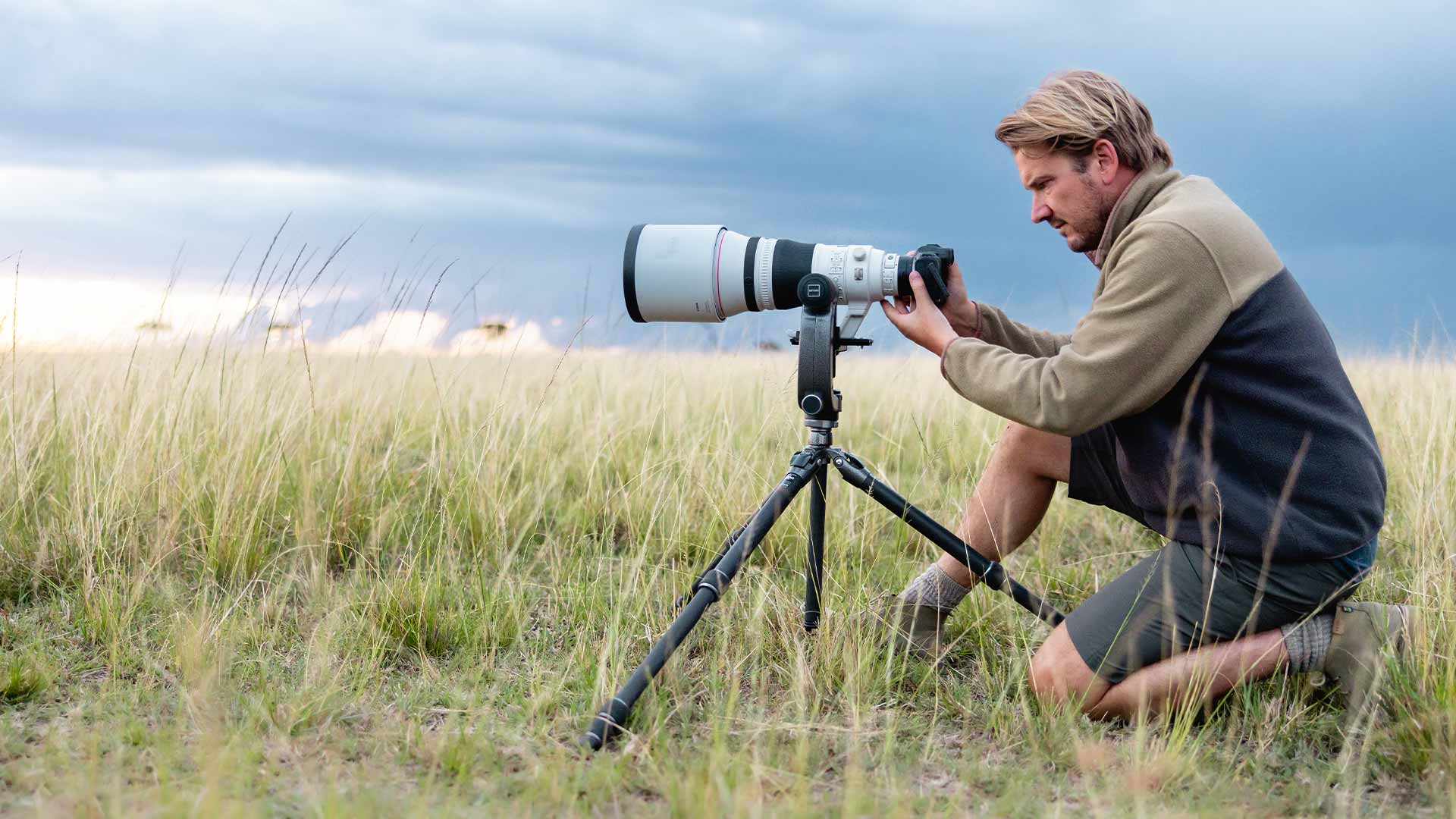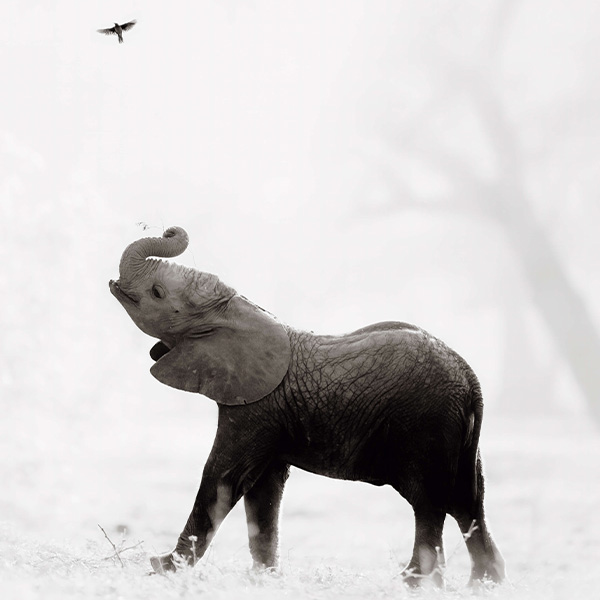Pie Aerts
Pie Aerts is a Dutch documentary and wildlife photographer with a sincere interest in human/wildlife conflict stories. Through his lens, he examines the intricate relationship between animals, humans and nature. As we become increasingly distant from each other and ourselves, Pie uses photography to search for the cause of this disconnection.
Location: Netherlands
Date: 20th January 2023


Heroes of the extreme
An interview with Pie Aerts


Meeting Pie
The journey to the extraordinary.
Art / beauty will save the world looks to be some sort of mantra of yours. We strongly believe this is true, how did you develop your art, and your aesthetic taste?
Being a kid there was nothing I loved more than drawing. While others played video games or rode their bikes, I could lock myself in for hours with a pencil and paper. It taught me to use my imagination and create stories within the four edges of a canvas. Now, almost 3 decades later, I’m using that very same spirit in an attempt to create meaningful stories about the last true wild places on earth. My aesthetics are therefore strongly influenced by what I call my Paracosm.
A paracosm is a world that is created in one’s childhood but that somehow returns later in life in the same kind of form and shape. That’s how Africa feels to me.
I’m going back to that ‘drawing desk’ of my childhood every time I go back to Africa. When I’m there I immerse myself in nature, work with my senses, and I get that very same sensation of being a kid and getting carried away in my own fantasy world. With a combination of medium format analogue photography, digital imagery and certain post production techniques I try to recreate visuals straight out of my own visionary world in attempt to bring the fragile but powerful narrative of the African wild into homes around the world as a daily reminder that the natural world is worth fighting for.
How did it all become your job?
My background isn’t in photography or art, but in economics and business. However, in 2018 I decided to take a big leap of faith and together with my wife Jessica, we both quit our corporate jobs, said goodbye to our lives and friends back home and embarked on a one-way ticket to India. Breaking with the life I had so carefully crafted for more than a decade was one of the scariest things I ever did, but that courage got rewarded pretty quickly.
A few months into our trip, the stars aligned and I got an offer by teNeues, one of Europe’s largest photography book publishing houses, to publish my first photographic monograph. In the 2 years that followed we travelled far and wide to some of the wildest corners of our planet to document stories for my first book "Tales from the Roads less Traveled." Slowly, a recurring theme in my work became the ability of hope to restore our lost connections and I started to dig deeper into human/wildlife coexistence stories.
Photography became my way of examining the cause of an increasing disconnect between us and our natural world.
A visual journey towards the essence of our existence. In the years that followed I worked day and night on stories that had meaning to me and the world around me and I managed to find a way into the world of photographic story-telling. I could not be more grateful for the opportunities that came my way and for all the people that supported me throughout the years by believing in the same values as I do.


In all this, your “Prints for Wildlife” fits perfectly, when and how did you create it, and what is its ultimate purpose?
Because I firmly believe that art can be an incredibly powerful tool in restoring the lost connections I am examining through my photography, I initiated ‘Prints for Wildlife’ in 2020. An annually returning month-long print fundraiser collecting funds for African parks and communities that are badly hit by Covid19 by selling wildlife art.
By bringing together more than 230 wildlife photographers from every corner of the globe, we managed to raise $2.1 million dollars for conservation across 3 annual editions. 100% of the proceeds went to the African Parks Network in support of people and wildlife on the ground in 22 parks across 12 countries under their management.
Thanks to the generous donations of all 230+ photographers and thousands of people around the world purchasing prints, we managed to send stories of hope into people's homes around the world. But after 3 successful editions, and with Covid19 on a rapid global decline, we are currently recalibrating our model and moving back to the drawing board to build a sustainable future for Prints for Wildlife as a fundraising platform to support conservation initiatives.
In the past 3 years you have spent some significant time in Kenya. Can you tell us what you are working on?
When the world came to an abrupt stop due to the outbreak of a global pandemic in March 2020, I decided to exclusively shift my focus to the African continent to document the impact Covid19 was having on wildlife and communities. In the years that followed I witnessed and photographed the disappearance and reoccurrence of tourism in Kenya, Zambia, Botswana and Rwanda. Never before did silence feel so confusing, fearful, and liberating all at the same time. In fact, in the absence of the usual herds of tourists, but with wildlife in full effect, I felt a deeper connection with Africa than ever before.
I kept revisiting the same places over and over again and as time progressed, I started to feel part of something bigger, as if space and time didn’t exist. And in that particular space of not knowing what’s ahead of us, "Umoja" was born, a series of images that became my way of dealing with the uncertainty of living in between an old world that was falling apart and a new one that has not yet emerged. This resulted in an ongoing print collection and a book that tells the story about my personal relationship with the landscape and wildlife I encountered. The scheduled release date for the book is late 2023, early 2024. The word "Umoja" is Swahili for "oneness," for "unity," a feeling that plays a central role in all of my work.




Framing the extraordinary
Capturing award winning photographs.
Among the many and several places you’ve been, which one do you think is in more danger, and which one would need much more attention than it has right now?
We came to a stage in which the destruction and degradation of our planet is so widespread and on such a large impactful scale, that it does not make sense anymore to pick certain places.
The climate crisis we are currently facing is mostly one of disconnection. Humans have not only disconnected from the natural world, but also from each other and ourselves.
Restoring those broken connections all starts within yourself. Question yourself: What do you stand for in life? What do you value? What kind of world do you want to pass on to your children? Reconnect with your intuition and use it as a compass to find your purpose in life. Let yourself be guided by your spirit and your heart and then you will find that a whole new universe opens up for you.
A universe of possibility, of positivity and hope. Spread that energy to those around you because even though it might seem all our small individual efforts are not making a difference anymore. Nothing is further from the truth. A lot of small contributions create a forward movement, a wave of hope and belief in the possibility of building a better world for our children.


Can you tell us what in our every day life we can do to help you in your mission?
Wherever you live in the world, go outside after you read this and enjoy nature. Use your senses to engage with your surroundings. Breathe the fresh air, look for beauty in every simple moment, enjoy the warmth of sun on your face, a sudden breeze of wind or drops of rain on your skin. It might sound silly, but the power of those simple moments is what can make you reconnect with life in its purest form. And all we need at the moment, is more people to reconnect with their inside and outside world.
Be inspired
Read more about Pie and his search for hope with the African wildlife.
IN SEARCH OF HOPE
A Gitzo Story by Pie Aerts
READ THE STORY

























